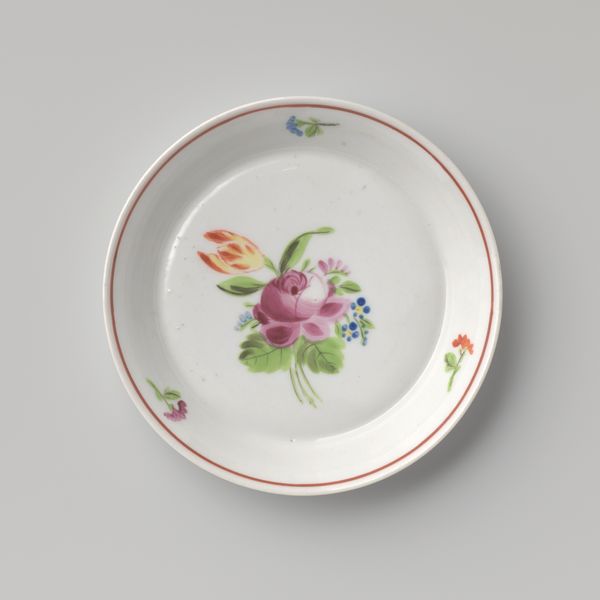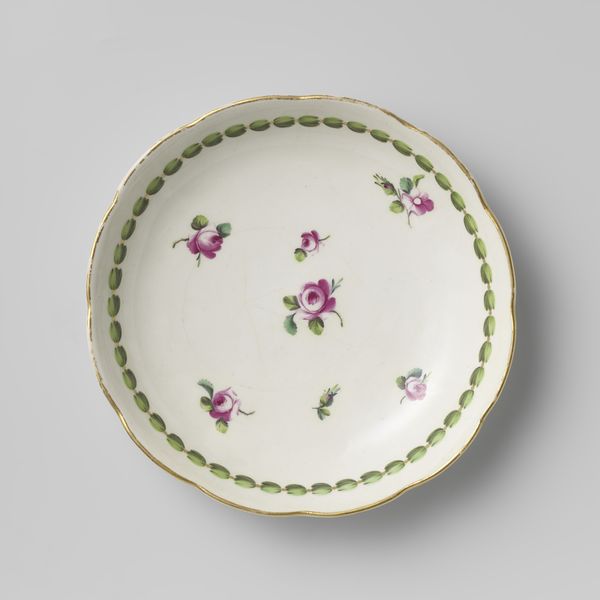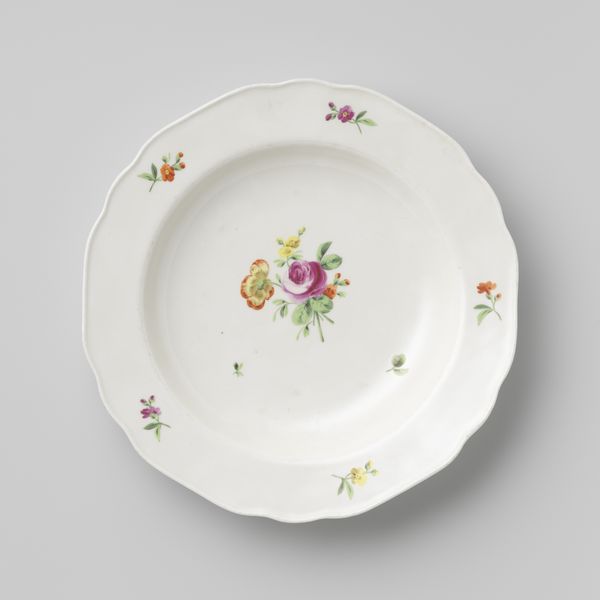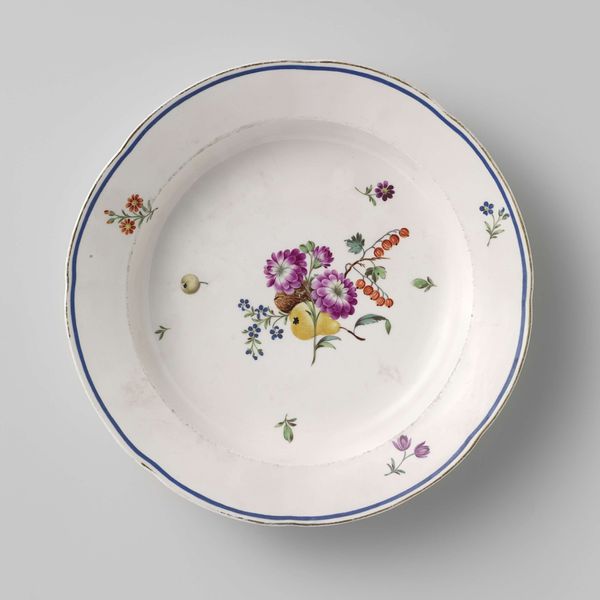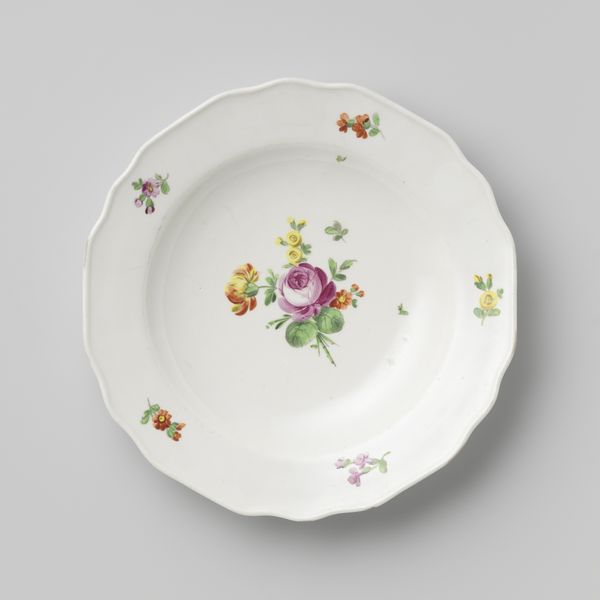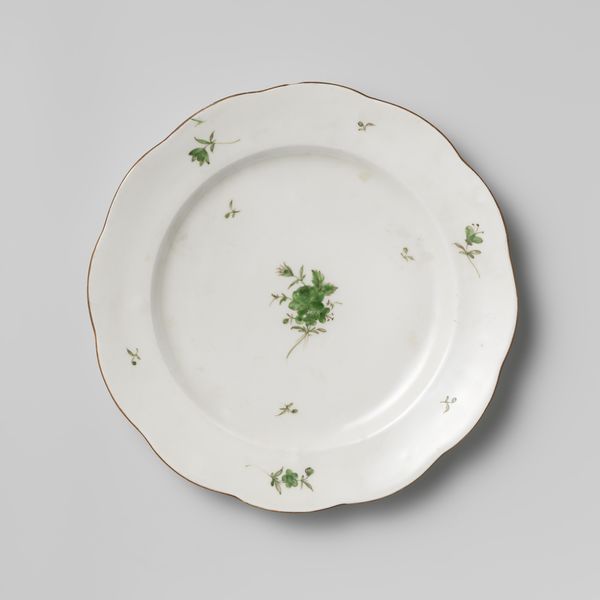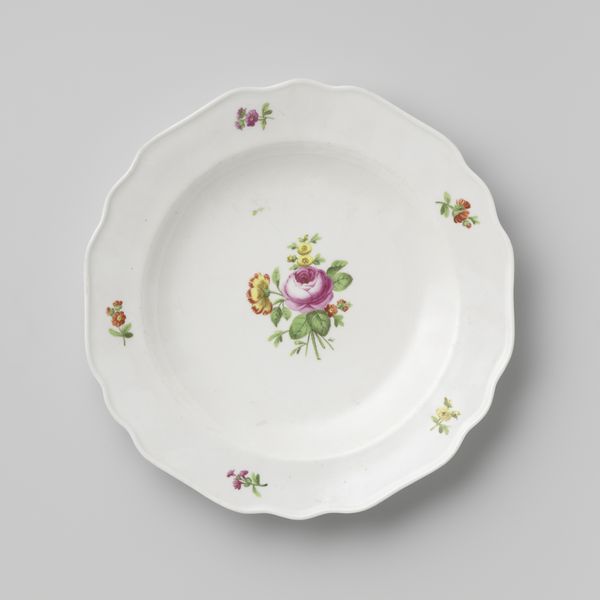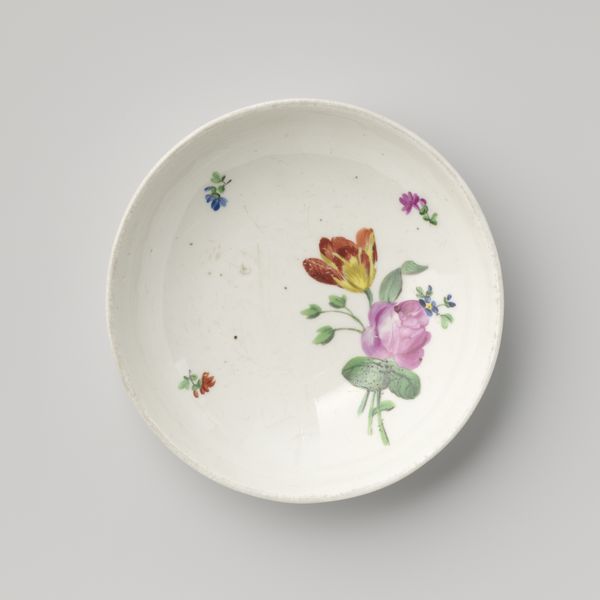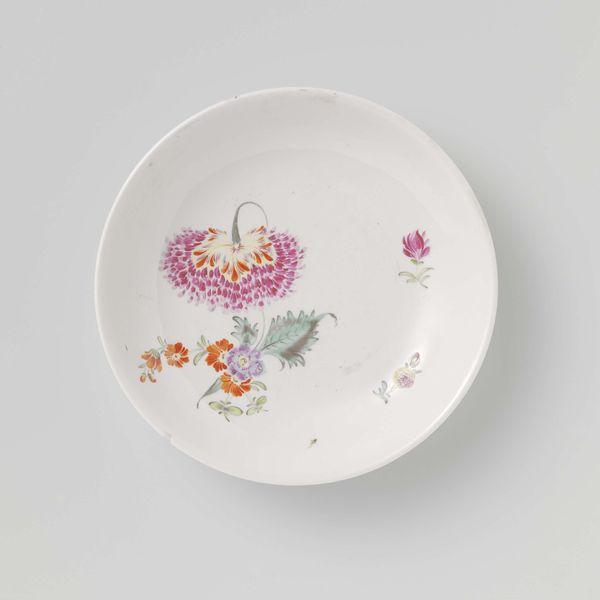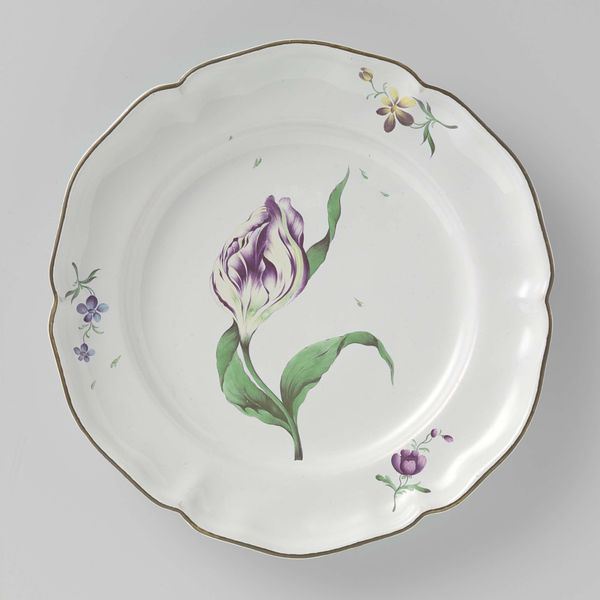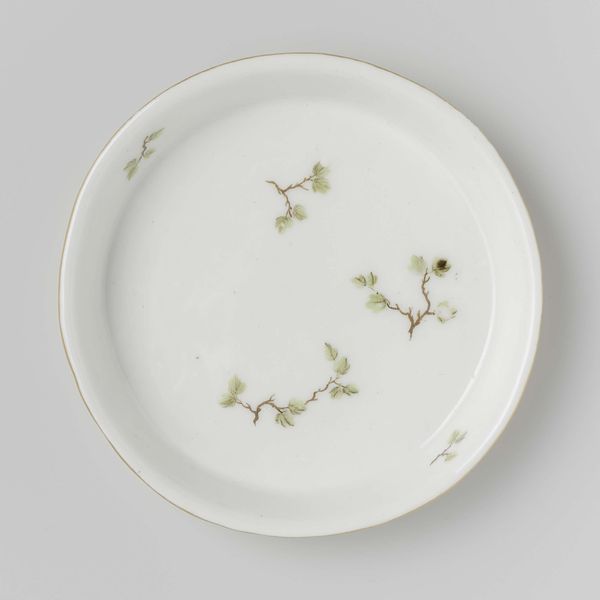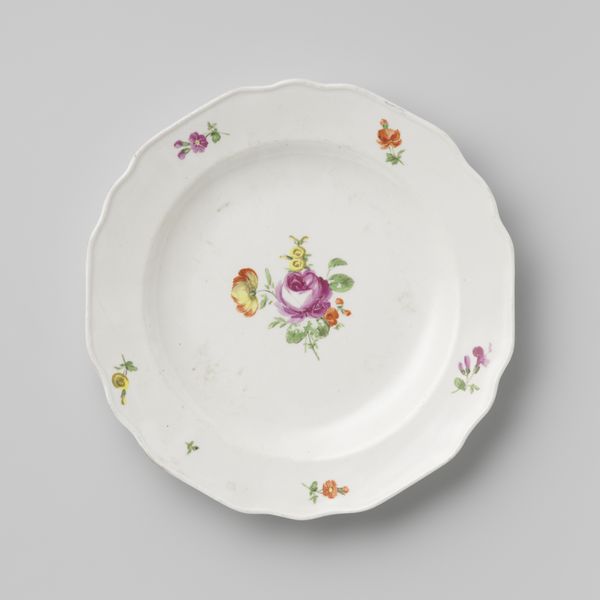
Dimensions: height 2.5 cm, diameter 12.5 cm, diameter 8.8 cm
Copyright: Rijks Museum: Open Domain
Editor: This is a ceramic saucer, titled "Saucer with a flower spray," made by Clignancourt around 1775 to 1790. The lone pink rose at its center has such an isolated, precious feeling. What stands out to you in terms of its historical and social context? Curator: The isolation you perceive is quite insightful. During this Rococo period, decorative arts, like this saucer, served as markers of social status and refinement. Consider the rise of porcelain factories, like Clignancourt, and the patronage they received from the aristocracy. This object is not merely functional; it's a statement. Editor: A statement of what, exactly? Wealth? Taste? Curator: Both. The delicate floral design, the gilded trim, all speak to a culture of leisure and privilege. Think about the elaborate tea ceremonies popular among the elite. Owning such fine porcelain signified not just wealth, but also participation in these exclusive social rituals. Can you imagine the types of spaces it might have occupied? Editor: I can see it in a brightly lit room, part of a larger, meticulously arranged tablescape. So, it's as much about performance as function. Curator: Precisely! And the imagery of the rose itself… In the 18th century, flowers held specific symbolic meanings. This would all factor into how its owner might want to present themselves and entertain guests. How do you think that meaning has evolved over time? Editor: Fascinating! It makes me see this seemingly simple object as a powerful communicator of social identity. It really brings out an additional layer of value, not only art, but also a socio-economical context. Curator: Absolutely! Recognizing the broader historical narrative behind such pieces allows us to better grasp their cultural weight and appreciate their role in shaping social interactions.
Comments
No comments
Be the first to comment and join the conversation on the ultimate creative platform.
